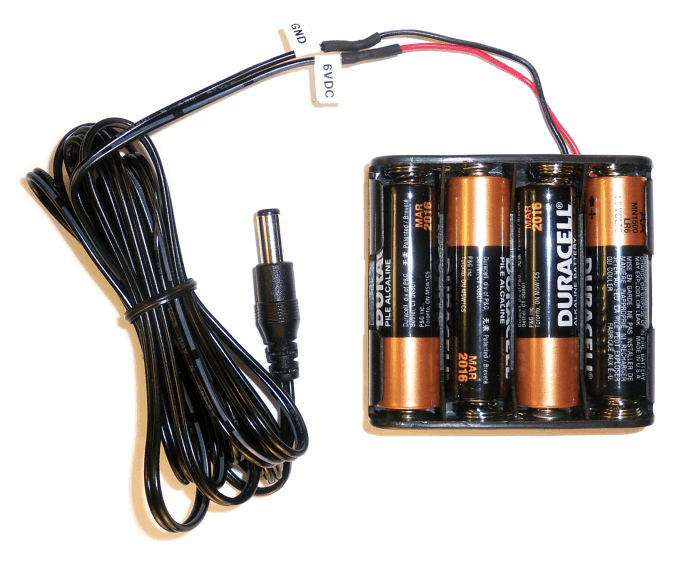SBAU171D May 2010 – January 2016 ADS1198 , ADS1298
-
ADS1298ECG-FE/ADS1198ECG-FE
- Trademarks
- 1 ADS1298ECG-FE/ADS1198ECG-FE Overview
- 2 Quick Start
- 3
Using the ADS1298ECG-FE Software
- 3.1 Application User Menu
- 3.2 Top-Level Application Controls
- 3.3 About Tab
- 3.4 ADC Register Tab
- 3.5 Analysis Tab
- 3.6 Save Tab
- 4 ADS1x98ECG-FE Input Signals
- 5 ADS1298ECG-FE/ADS1198ECG-FE Hardware Details
- ASchematics, BOM, Layout, and ECG Cable Details
- BExternal Optional Hardware
- CSoftware Installation
B.2 ADS1x98ECG-FE Power-Supply Recommendations
If you chose to power the MMB0 board through the wall adapter jack, it must comply with the following requirements:
- Output voltage: 5.5 VDC to 15 VDC
- Maximum output current: 500 mA
- Output connector: barrel plug (positive center), 2.5-mm I.D. x 5.5-mm O.D. (9-mm insertion depth)
- Complies with applicable regional safety standards
Figure 49 shows a +6V power-supply cable (not provided in the EVM kit) connected to a battery pack with four 1.5V batteries connected in series. Connecting to a wall-powered source makes the ADS1x98ECG-FE more susceptible to 50Hz/60Hz noise pickup; therefore, for best performance, it is recommended to power the ADS1x98ECG-FE with a battery source. This configuration minimizes the amount of noise pickup seen at the digitized output of the ADS1298.
 Figure 49. Recommended Power Supply for ADS1x98ECG-FE
Figure 49. Recommended Power Supply for ADS1x98ECG-FE